Almost exactly east of Berlin, at Letschin im Oderbruch, there is a small railway museum which mainly shows interlocking frames from the eastern parts of Germany. The collection consists of mechanical frames of various types, electromechanical ones as well as relay interlockings from old Gs0 to the Russian EZMG type (EZMG is the Russian abbreviation for Elektritscheskaja zentralisazija malych stanzij Germanii, which in English means Eletrical centralization of small stations in Germany). Robert Herzog has given me more than 70 images showing mainly the museum's exhibits which I'll present here with a few short explanations.
The first image shows the museum entrance, with some exhibits presented outside—the upper part of an old Prussian compartment car, various signals including an Hl signal (these signals were standardized over all of the OSShD territory, from East Germany to China), an EZMG signal as well as new German Ks signal:
Railway museum Letschin, 2020
Here are the colour light signals and two train indicators:
Railway museum Letschin, 2020
The rest of this posting, however, is dedicated to the simplest mechanical interlocking, namely varios key interlockings.
The first one is a wall-mounted key interlocking (or "central lock") as described in the German "Einheit" (meaning "Standard") drawings. The horizontal bars are moved by the keys representing the "incoming information"—typically, these are keys for points. The vertical bars release the keys in the locks on the upper edge, which reprsent the "outgoing information"—typically, these are keys that in turn release signal levers. This central lock is from signalbox R2 at Lübbenau:
Wall key interlocking according to "Einheit" drawing from signalbox R2 at Lübbenau, railway museum Letschin, 2020
Here is, for comparison, a drawing of such a key interlocking from the bool "Erläuterungen zu den Einheitszeichnungen für Stellwerksteile" ("Explanations for the standard drawings for interlocking parts"), published in 1927 by the German Reichsbahn:
The inventor of these key interlockings was Paul Bouré from France. He called them "serrure centrale" and had patents in many countries. Railways in many countries—but not Germany—chose a similar name, for example "Zentralschloss" in Austria or "centrallås" in Sweden, which are both direct translations of ("central lock"). Here is a diagram from Bouré's US patent 640,359, which is accessible e.g. on Google's patent website:
US patent drawing for central lock by Paul Bouré, US Patent Office, Patent 640,359
The key interlocking at the museum is actually for mounting on a wall, as can be seen from the two small brackets at the top left and right. Probably for space reasons, it was mounted here below the block instruments. The vertical bars could, in principle, be connected to the locking rods of the block instruments, which would lock the points keys electrically. However, here the are separate key locks for this purpose. Thus, for reversing points, the signalman had to turn the key in the lock below the instrument, put it into a route lock on the key interlocking, turn it, and now could turn the points keys to unlock some points:
Key interlocking and block instruments from signal box R2 at Lübbenau, railway museum Letschin, 2020
The rugged construction of these old key interlockings was later replaced with a more elegant one, where all the moving parts are inside a case, and all locks are mounted in a single row at the lower edge. These type is commonly called "Einheitsschlüsselwerk" even though the older ones also were specified in "Einheit" drawings. Coloured segments on the route bars indicate whether all necessary keys are present to unlock a route key—a nice feature missing from all other central locks I know.
At Letschin, there are three "Einheitsschlüsselwerk" key interlockings, which you can see here:
Einheitsschlüsselwerk from Küstrin-Kietz, railway museum Letschin, 2020
Einheitsschlüsselwerk from traffic bureau Rotes Luch connected to block instruments, railway museum Letschin, 2020
Einheitsschlüsselwerk von unbekanntem Bahnhof, railway museum Letschin, 2020
Finally, here is an extremly simple key interlocking, as it is used today on many German lines using rules akin to TWC (train warrant control). This one sort of gives you "from 2 make 1": If both keys for points 19 and 20 are turned in the upper locks (as seen in the picture), and then one pulls the bar to the left (alos as in the picture), one can turn key "19+ (20+)" and take it from the lock. What then happens with it, I do not know ...
Both upper keys, by the way, have to have the same key blade, as the lock inscriptions are the same. Still, the signalman needs two of those keys to release the bar and therefore the route key:
Simple key interlocking and block instruments from Seefeld (Mark), railway museum Letschin, 2020
This is the end of this first posting with R. Herzog's pictures. In the next one, we will see real lever frames!
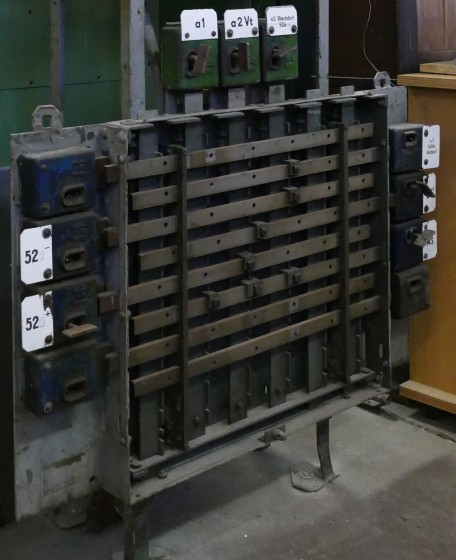
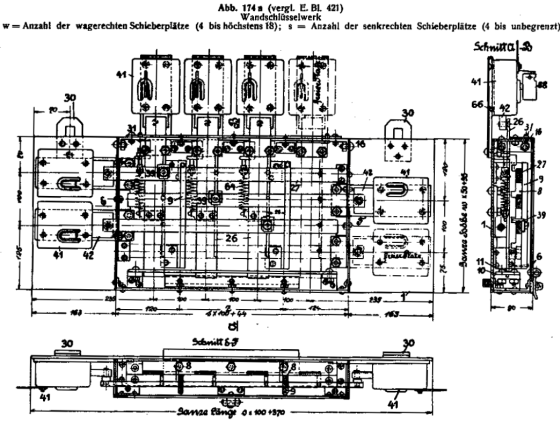
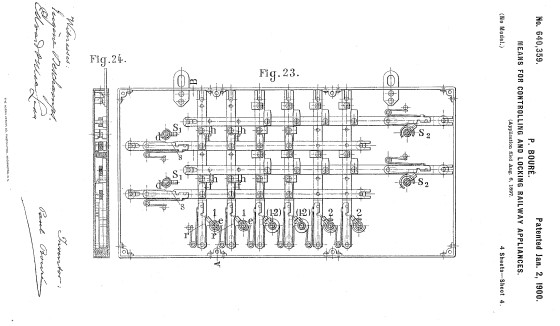
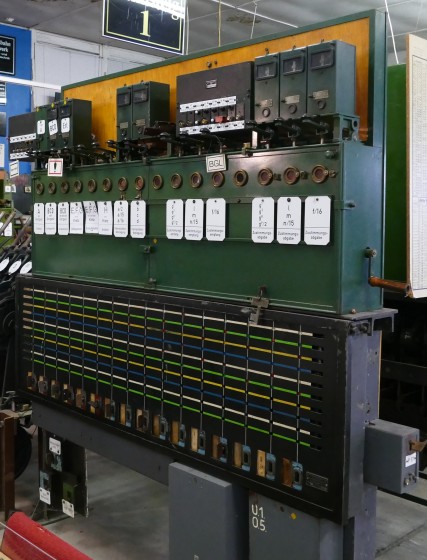
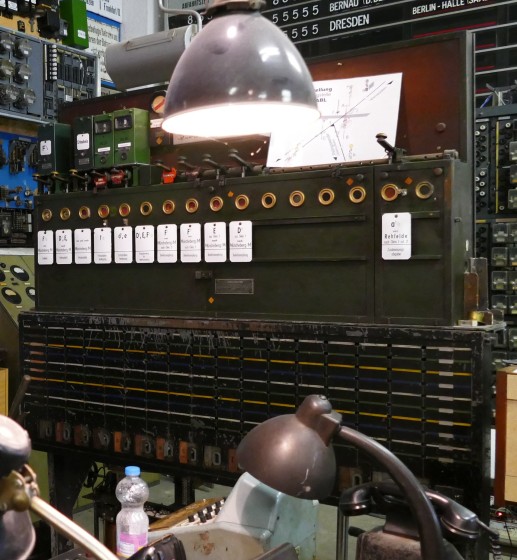
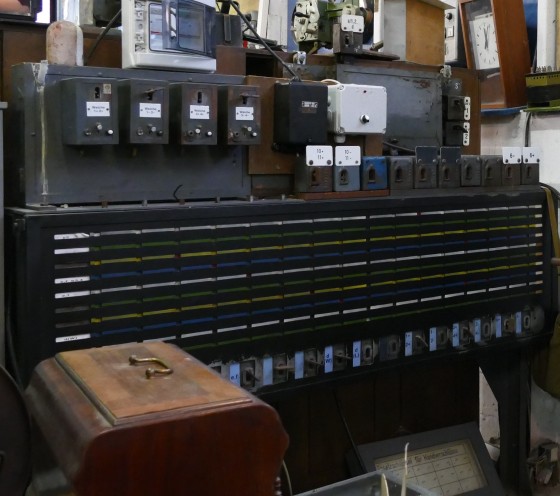
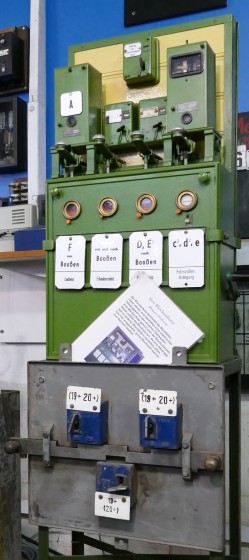
No comments:
Post a Comment